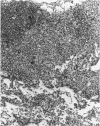Abstract
Thirty-four gnotobiotic dogs were used to study the effects of R252 canine distemper virus (CDV) infection on the lymphoid system. Twenty-one dogs were inoculated parenterally, and 6 dogs were infected by contact exposure to inoculated littermates. Seven littermate dogs were maintained as uninfected controls. The means of the absolute lymphocyte counts of dogs infected with R252 CDV were significantly decreased for 7 weeks after infection. The lymphocyte counts failed to return to normal in 7 dogs which became moribund with neurologic signs and were sacrificed 27 to 47 days after infection (group I). The 19 dogs which survived the 12-week observation period had normal lymphocyte counts by 8 weeks after infection. Five of these dogs (group II) were subsequently found to have demyelination of the central nervous system (CNS), while no CNS lesions were demonstrated in the remaining 14 infected dogs (group III). The thymuses of dogs of group I were atrophic and their lymph nodes were depleted in lymphoid cells. In addition, the number of Hassall's corpuscles per thymic lobule were decreased in dogs of group I. Viral nucleoprotein was demonstrated in thymus and lymph node cells by electron microscopy. No lymphoid lesions were found in the dogs of group II. Some of the thymuses of dogs of group III were significantly larger than those of uninfected controls, and they contained increased numbers of Hassall's corpuscles per thymic lobule. Further, germinal centers were found in two thymuses of dogs of group III.
Full text
PDF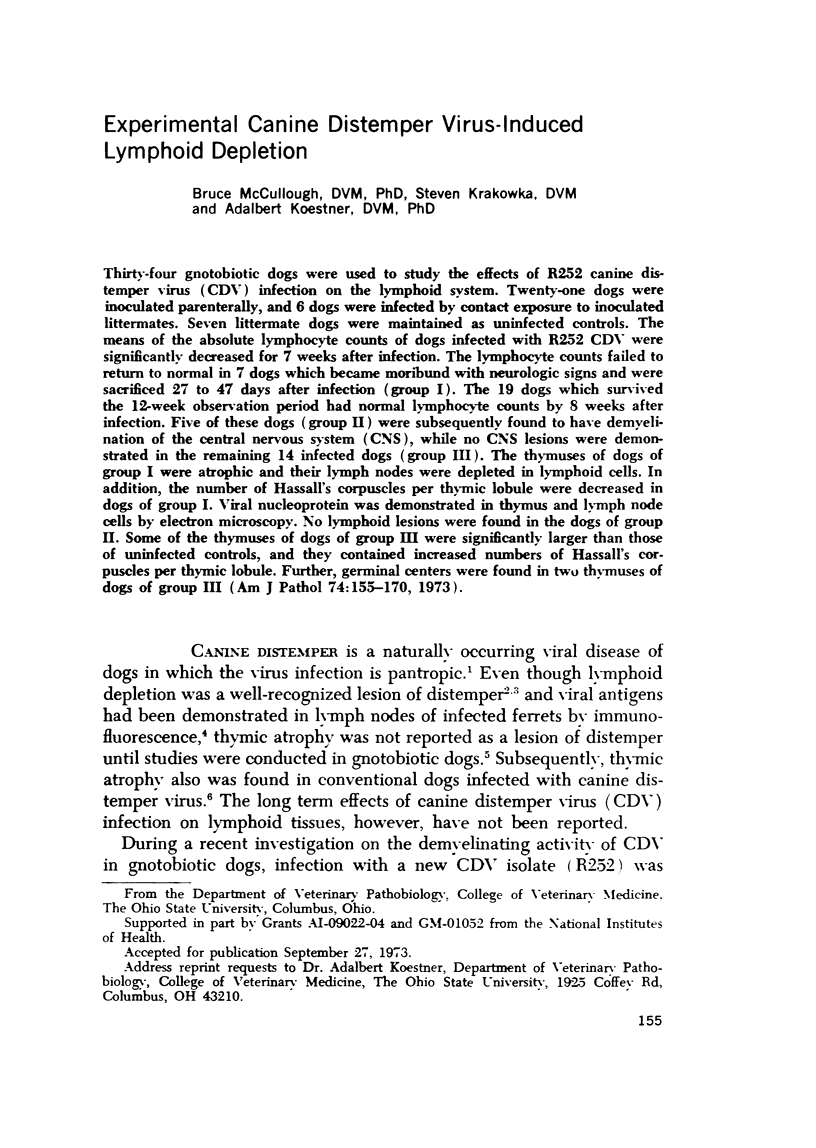

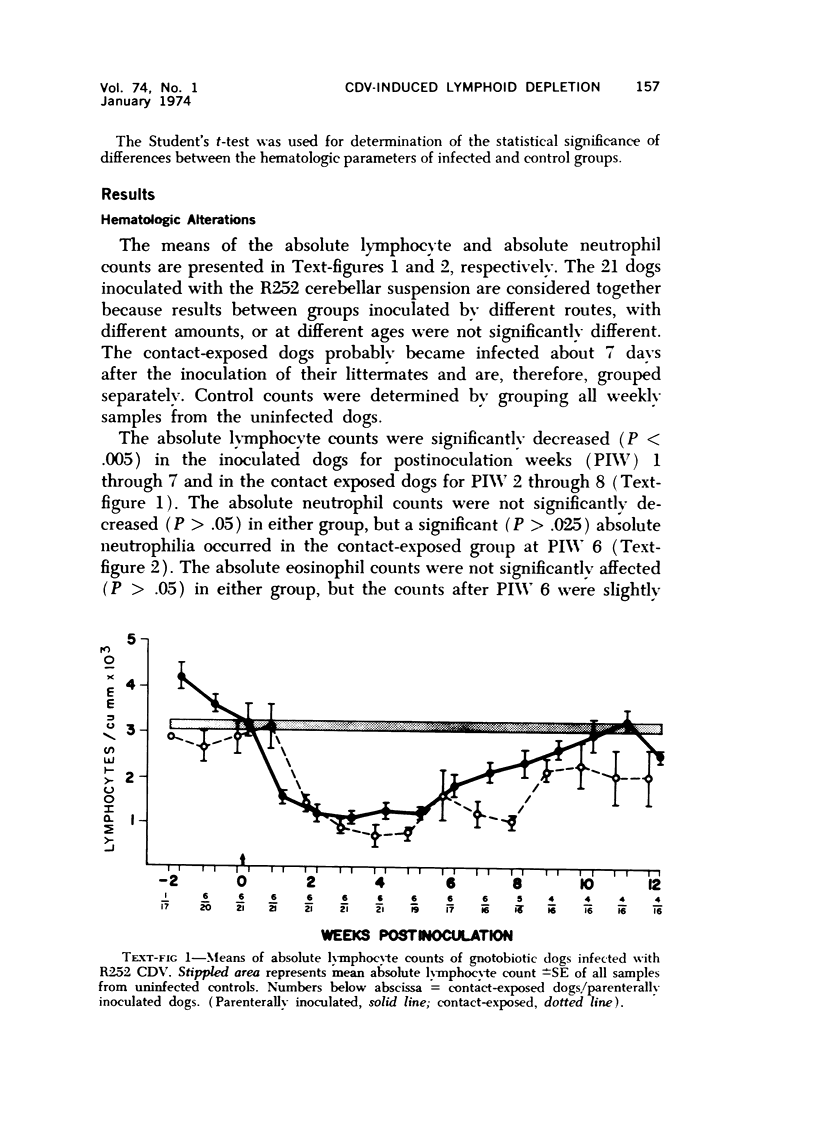
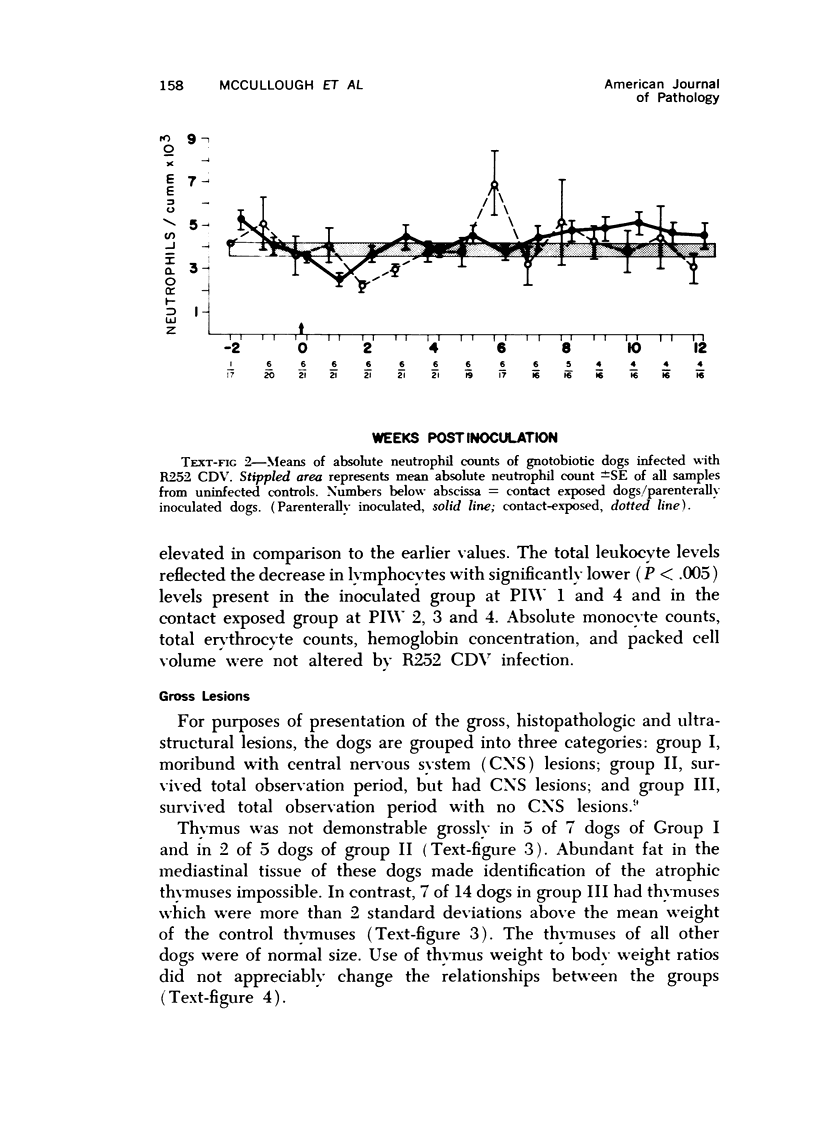

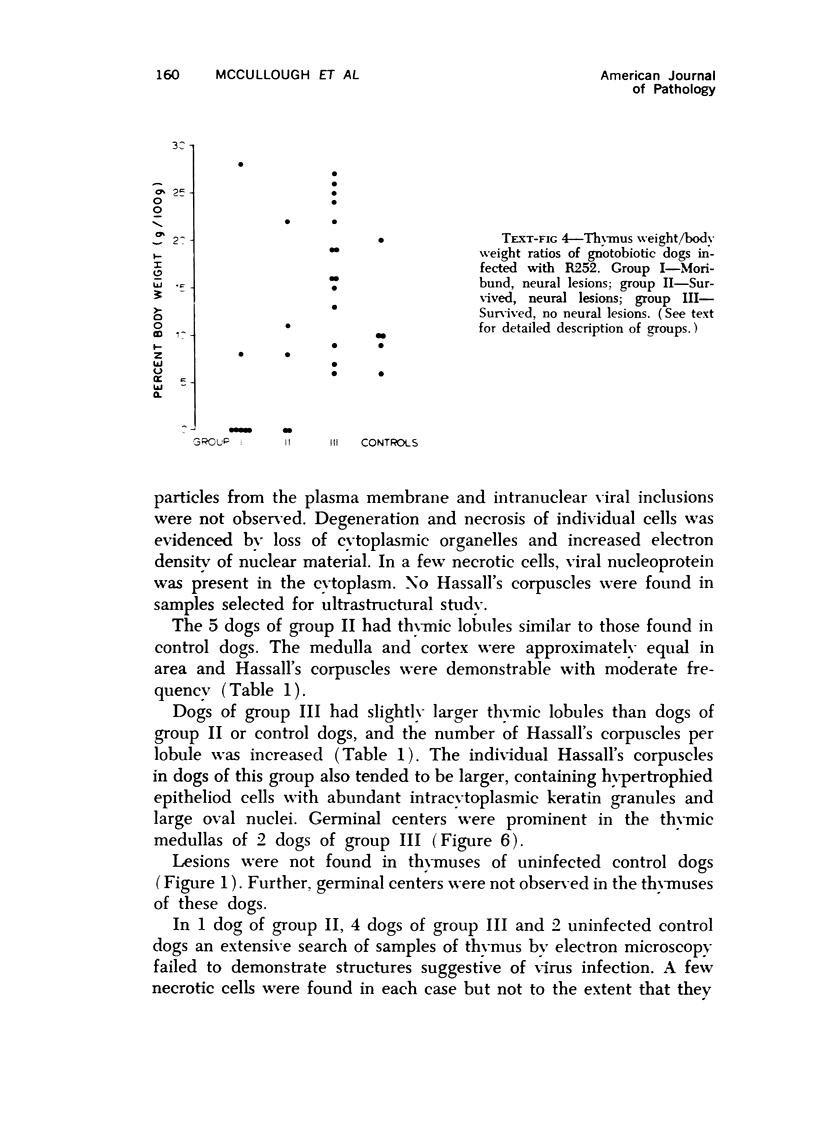
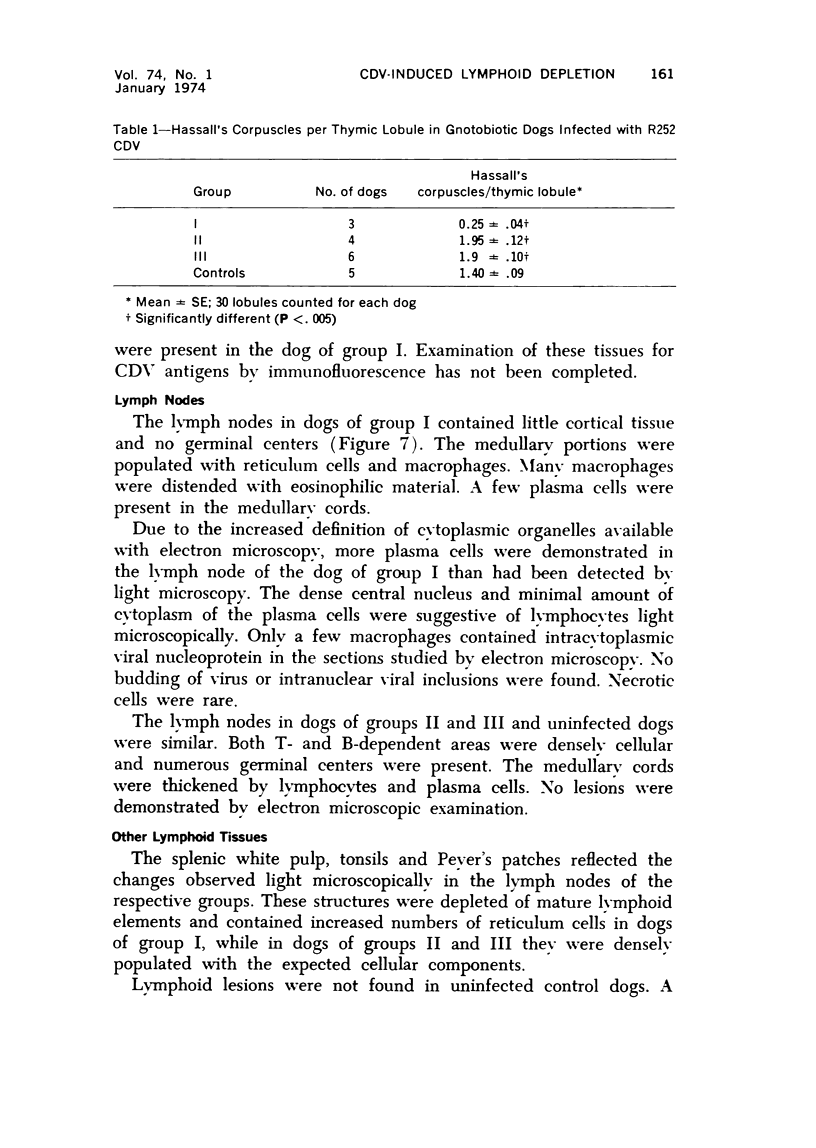
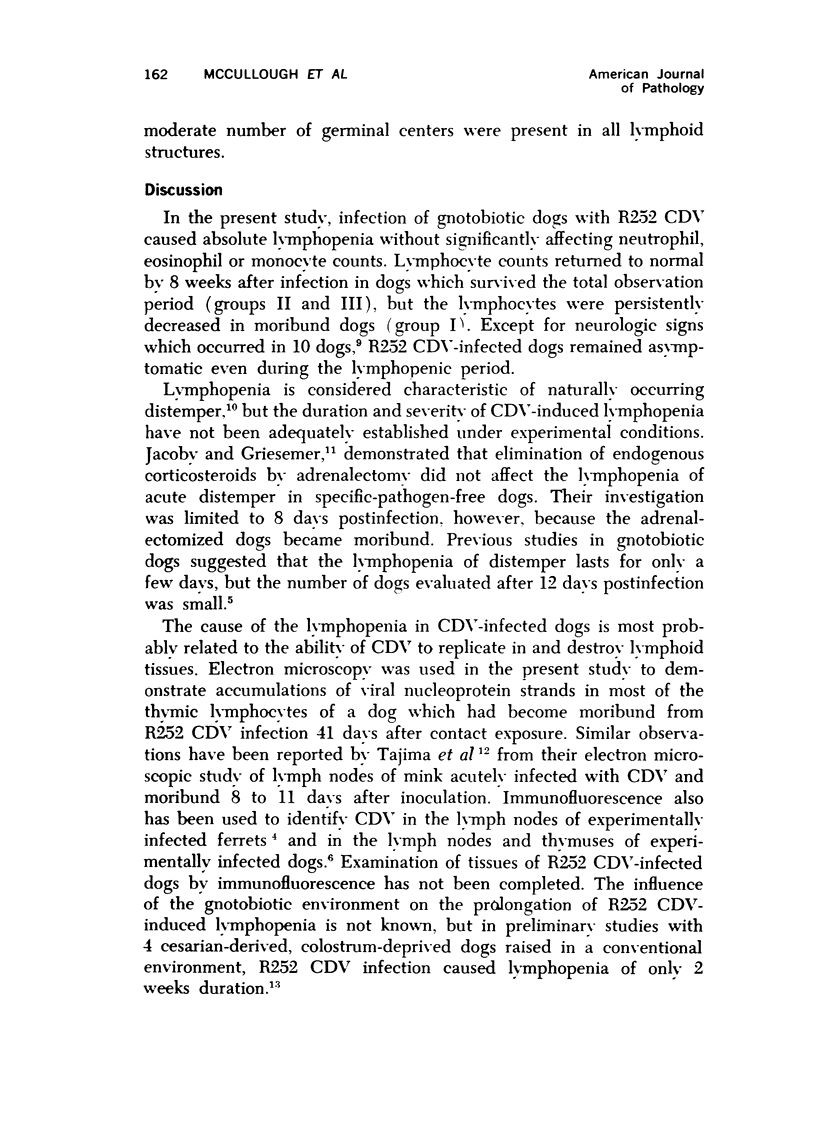
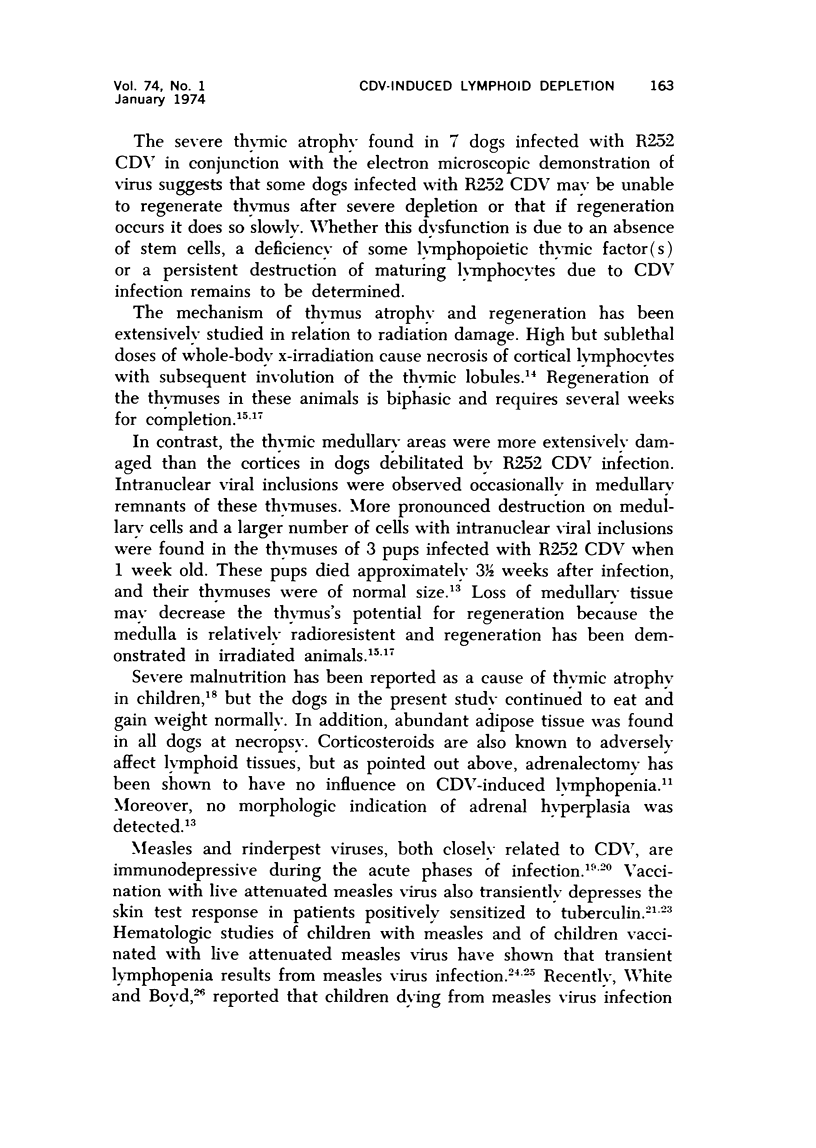
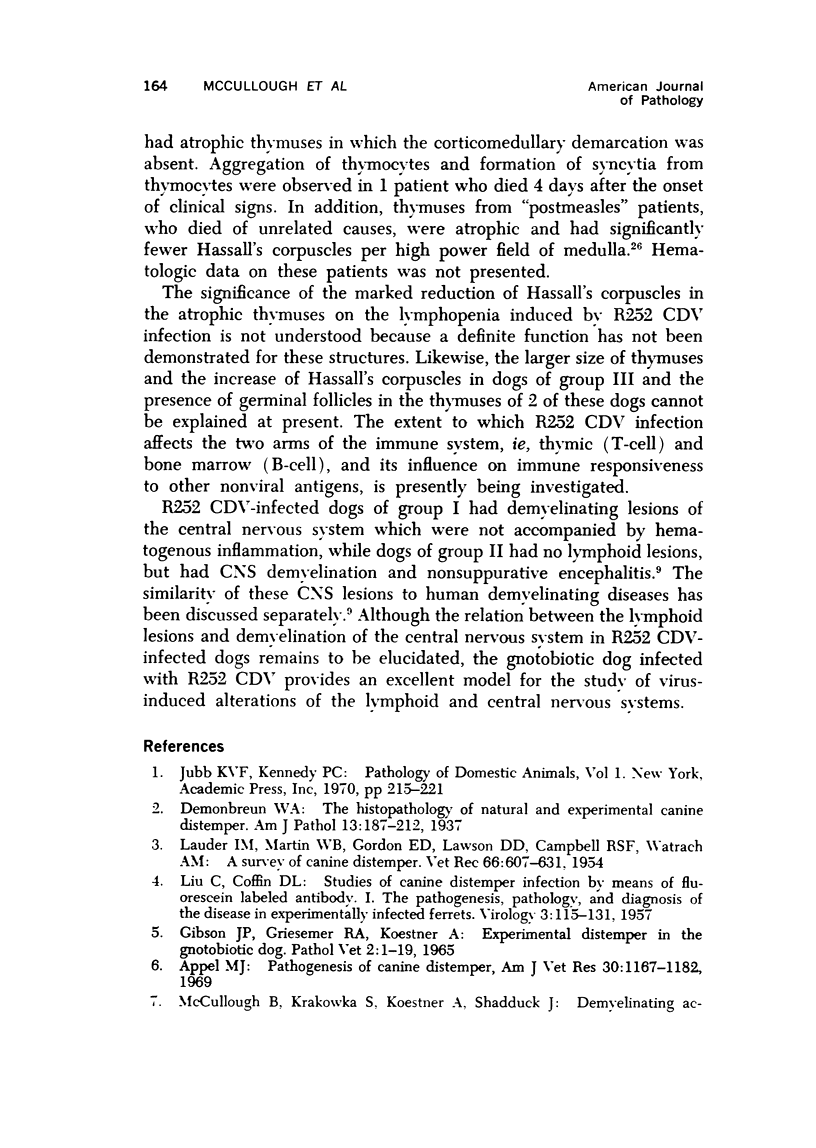
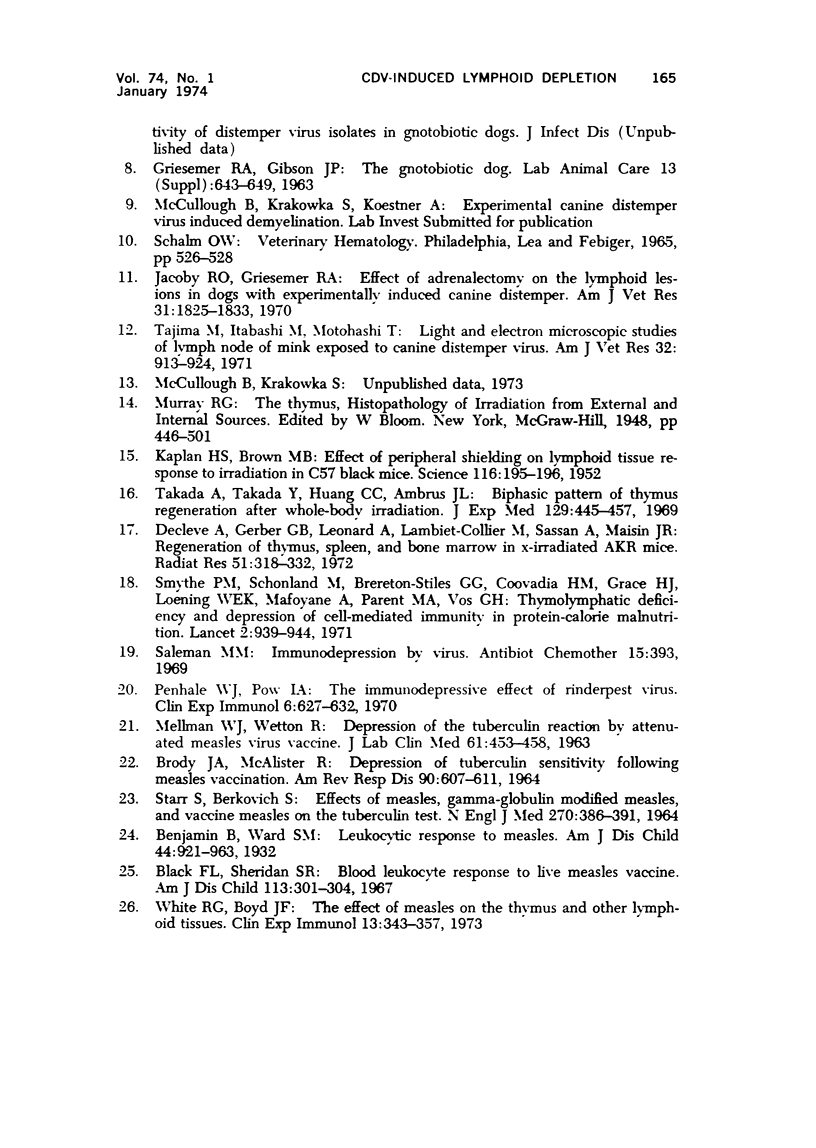
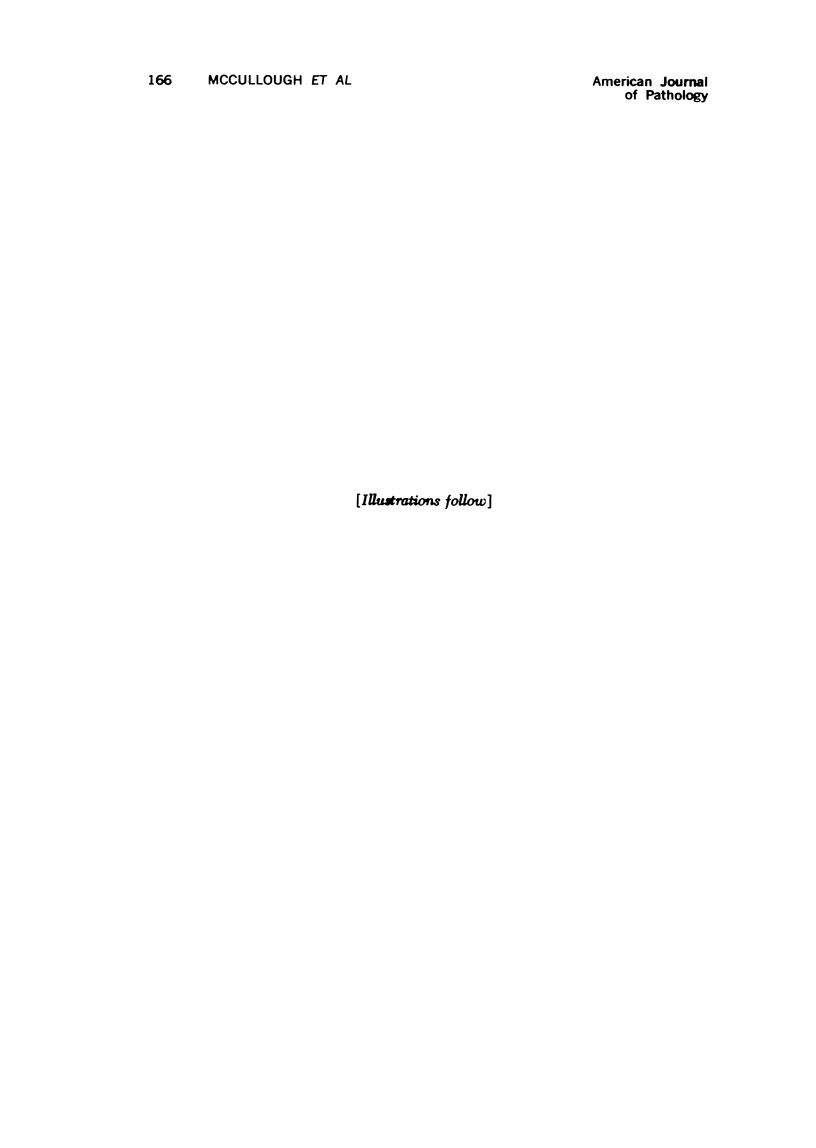
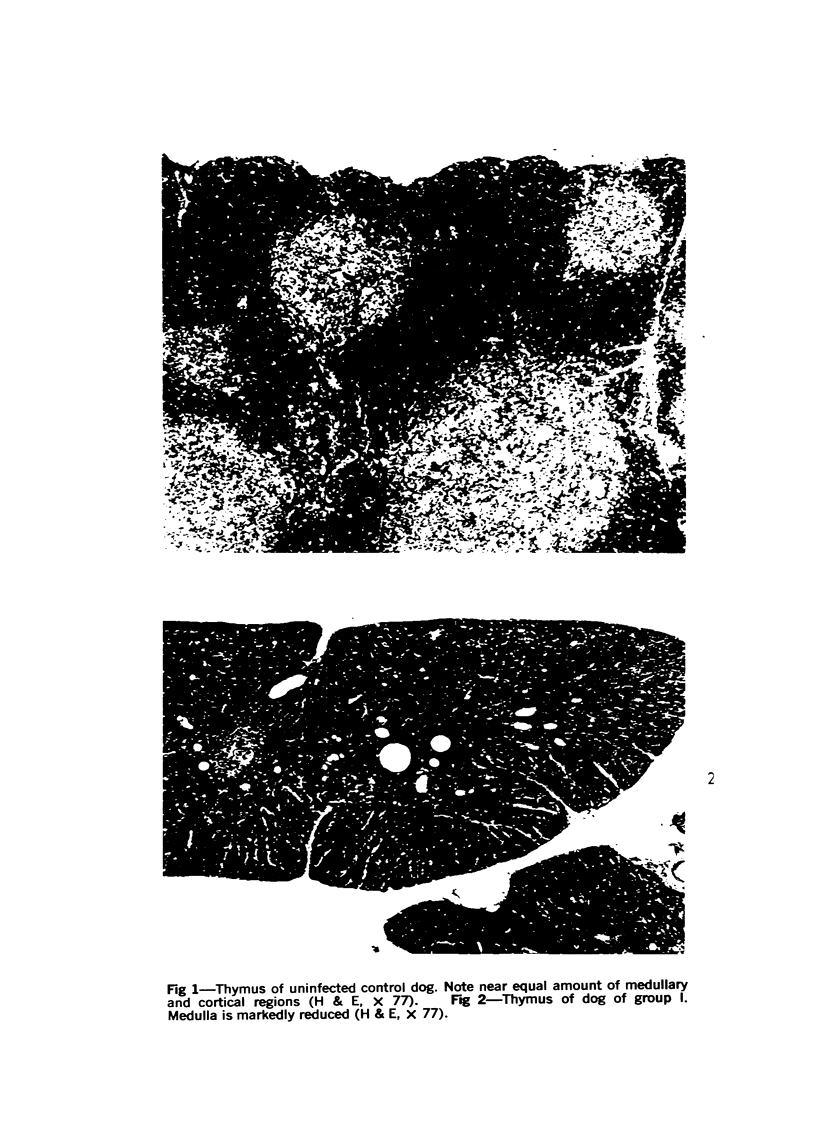
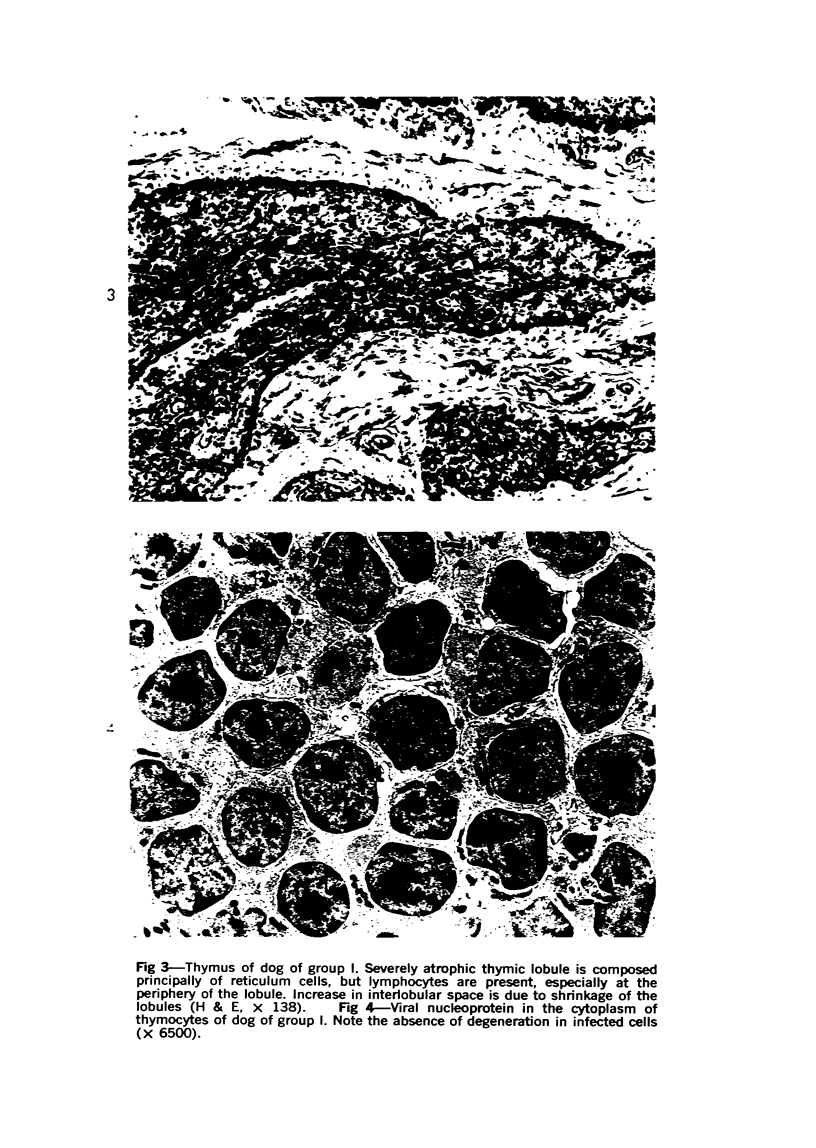
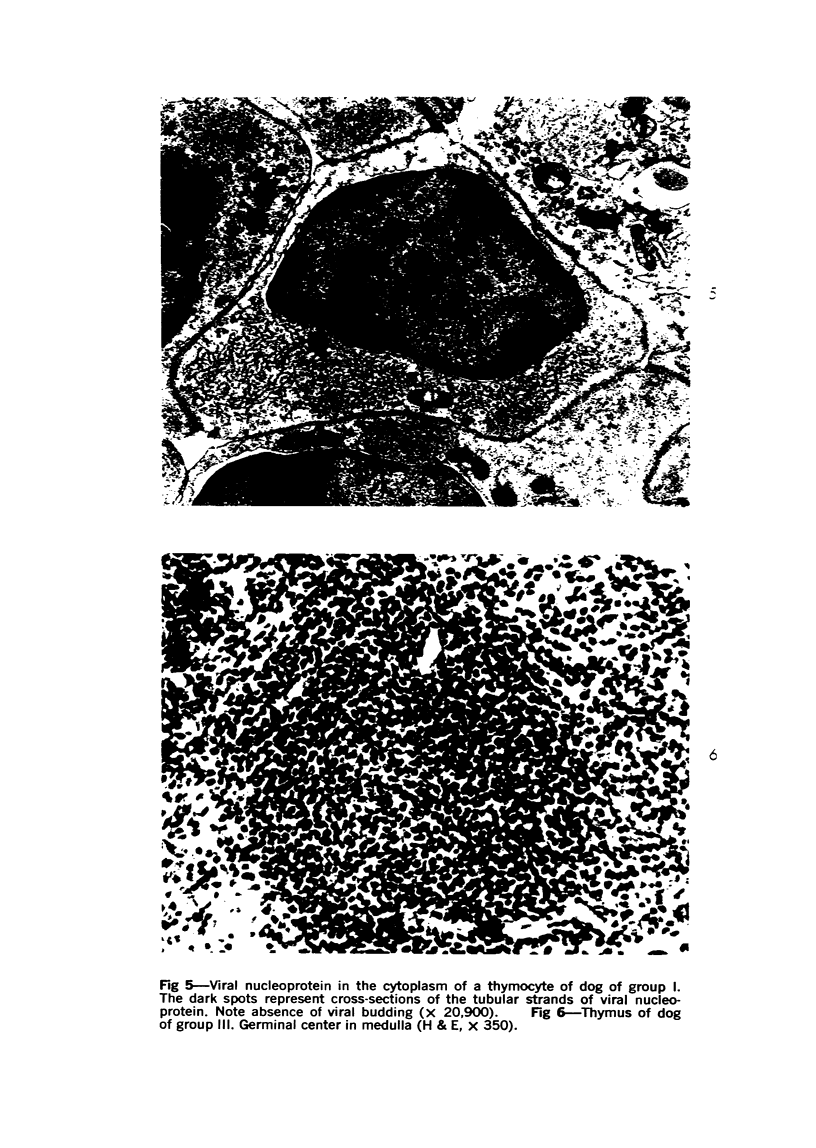
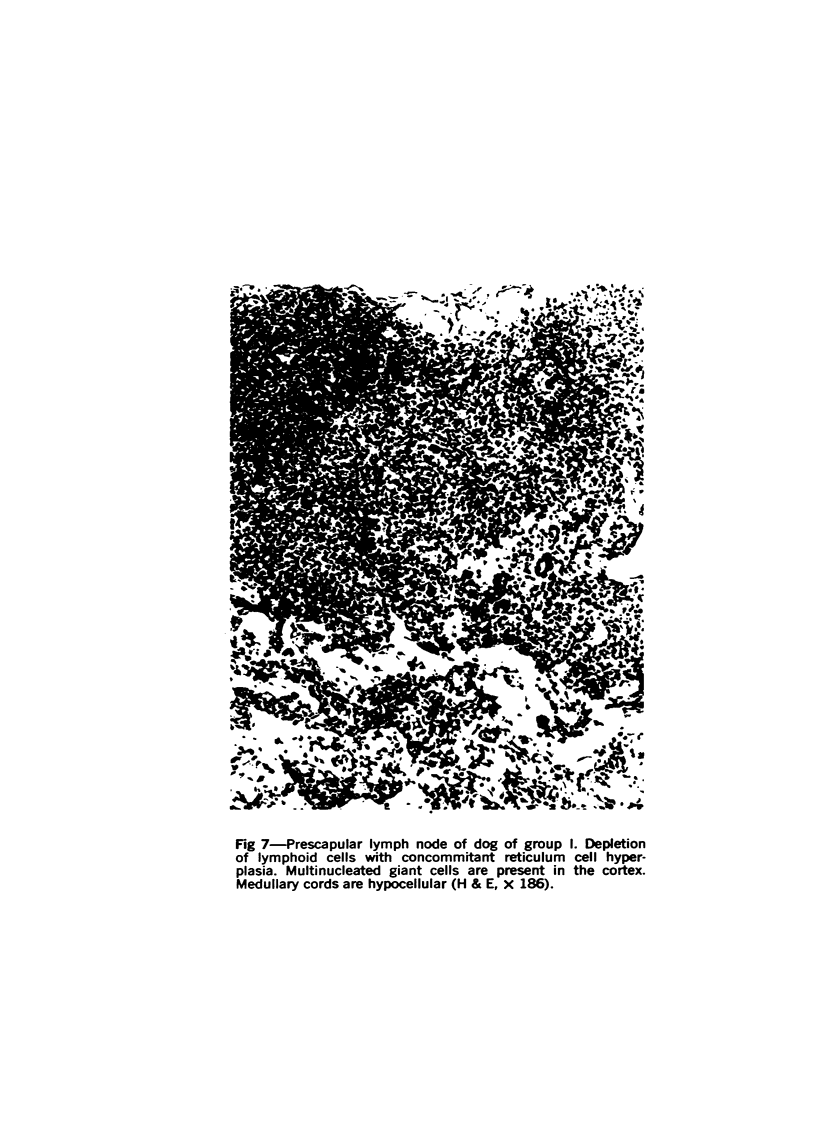
Images in this article
Selected References
These references are in PubMed. This may not be the complete list of references from this article.
- Appel M. J. Pathogenesis of canine distemper. Am J Vet Res. 1969 Jul;30(7):1167–1182. [PubMed] [Google Scholar]
- BRODY J. A., MCALISTER R. DEPRESSION OF TUBERCULIN SENSITIVITY FOLLOWING MEASLES VACCINATION. Am Rev Respir Dis. 1964 Oct;90:607–611. doi: 10.1164/arrd.1964.90.4.607. [DOI] [PubMed] [Google Scholar]
- Black F. L., Sheridan S. R. Blood leukocyte response to live measles vaccine. Am J Dis Child. 1967 Mar;113(3):301–304. doi: 10.1001/archpedi.1967.02090180061002. [DOI] [PubMed] [Google Scholar]
- Decleve A., Gerber G. B., Leonard A., Lambiet-Collier M., Sassen A., Maisin J. R. Regneration of thymus, spleen and bone marrow in x-irradiated AKR mice. Radiat Res. 1972 Aug;51(2):318–332. [PubMed] [Google Scholar]
- Demonbreun W. A. The Histopathology of Natural and Experimental Canine Distemper. Am J Pathol. 1937 Mar;13(2):187–212.9. [PMC free article] [PubMed] [Google Scholar]
- Jacoby R. O., Griesemer R. A. Effect of adrenalectomy on the lymphoid lesions in dogs with experimentally induced canine distemper. Am J Vet Res. 1970 Oct;31(10):1825–1833. [PubMed] [Google Scholar]
- Kaplan H. S., Brown M. B. Effect of Peripheral Shielding on Lymphoid Tissue Response to Irradiation in C 57 Black Mice. Science. 1952 Aug 22;116(3008):195–196. doi: 10.1126/science.116.3008.195. [DOI] [PubMed] [Google Scholar]
- LIU C., COFFIN D. L. Studies of canine distemper infection by means of fluorescein-labeled antibody. I. The pathogenesis, pathology, and diagnosis of the disease in experimentally infected ferrets. Virology. 1957 Feb;3(1):115–131. doi: 10.1016/0042-6822(57)90027-2. [DOI] [PubMed] [Google Scholar]
- MELLMAN W. J., WETTON R. Depression of the tuberculin reaction by attenuated measles virus vaccine. J Lab Clin Med. 1963 Mar;61:453–458. [PubMed] [Google Scholar]
- Penhale W. J., Pow I. A. The immunodepressive effect of rinderpest virus. Clin Exp Immunol. 1970 Apr;6(4):627–632. [PMC free article] [PubMed] [Google Scholar]
- STARR S., BERKOVICH S. EFFECTS OF MEASLES, GAMMA-GLOBULIN-MODIFIED MEASLES AND VACCINE MEASLES ON THE TUBERCULIN TEST. N Engl J Med. 1964 Feb 20;270:386–391. doi: 10.1056/NEJM196402202700802. [DOI] [PubMed] [Google Scholar]
- Salaman M. H. Immunodepression by viruses. Antibiot Chemother. 1969;15:393–406. doi: 10.1159/000386792. [DOI] [PubMed] [Google Scholar]
- Smythe P. M., Brereton-Stiles G. G., Grace H. J., Mafoyane A., Schonland M., Coovadia H. M., Loening W. E., Parent M. A., Vos G. H. Thymolymphatic deficiency and depression of cell-mediated immunity in protein-calorie malnutrition. Lancet. 1971 Oct 30;2(7731):939–943. doi: 10.1016/s0140-6736(71)90267-4. [DOI] [PubMed] [Google Scholar]
- Tajima M., Itabashi M., Motohashi T. Light and electron microscopic studies of lymph node of mink exposed to canine distemper virus. Am J Vet Res. 1971 Jun;32(6):913–924. [PubMed] [Google Scholar]
- Takada A., Takada Y., Huang C. C., Ambrus J. L. Biphasic pattern of thymus regeneration after whole-body irradiation. J Exp Med. 1969 Mar 1;129(3):445–457. doi: 10.1084/jem.129.3.445. [DOI] [PMC free article] [PubMed] [Google Scholar]
- White R. G., Boyd J. F. The effect of measles on the thymus and other lymphoid tissues. Clin Exp Immunol. 1973 Mar;13(3):343–357. [PMC free article] [PubMed] [Google Scholar]









